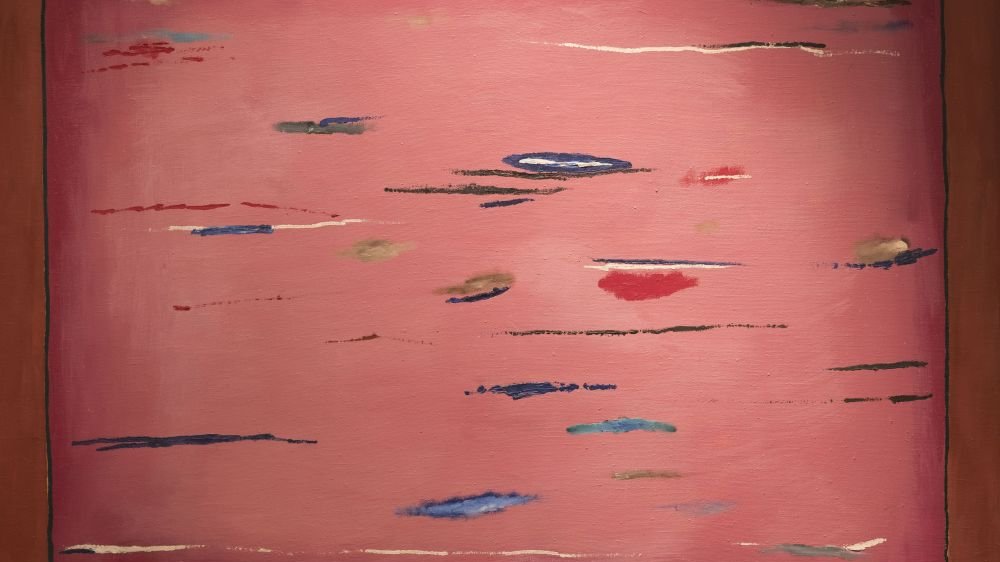Jerzy Nowosielski needs no introduction. He has rightfully secured his place in the hall of fame of eminent Polish artists. On his death in 2011, he left behind a body of work that continues to arouse the interest of art critics and historians and evoke the admiration of his dedicated fans, all the while provoking criticism (as it highlights his inner struggle to reconcile the beautiful, the sublime, and the spiritual, with everything that does not quite fit that description) and prompting collectors to eagerly seek to acquire his masterpieces. As significant as this polyphony may be, delving too deeply into it can lead us astray. While such aspects deserve recognition, dwelling on them risks distracting us from the non-verbal message conveyed by the paintings. Consequently, the design and the underlying concept of the exhibition play a crucial role. In this particular instance, great care has been taken to ensure that viewers can enjoy an undisturbed encounter with the work of one of the most important contemporary iconographers.
Such perfect interplay among all facets of the exhibition helps one focus on the essence of the art. Walking into the first room that holds the master's paintings feels like entering an entirely different world. Here, modesty reigns alongside a subtle solemnity that imparts upon the viewer a sense of participating in a profoundly mystical event. Rather than engaging in excessive intellectual pondering, one is encouraged to adopt a contemplative state, allowing the subject matter of the works to slowly sink in. Crucially, this effect is not limited to Nowosielski's icons and extends to his interspersed abstractions, which I believe have an extraordinary impact even without this juxtaposition.
Each painting exemplifies the convergence of abstraction and the spiritual experience - an encounter first felt by the artist during the creative process and later transmitted to the viewer who contemplates the fruits of the artist's labour. Such juxtapositions leave a lasting impression, enabling the public to embrace non-representational art. Acclimating oneself to abstraction holds great importance for understanding such art as many art viewers consider it detached from what people hold dear and only feel secure and confident when confronted with forms familiar to them from their everyday lives.
In this case, both the icons, rooted in specific imagery, and the abstractions, spring forth from a common source. I am tempted to suggest that icons, which capture the unimaginable in a representational form, are just as abstract as the abstractions, which can themselves well be seen as attempts to grasp the purest essence of the incomprehensible. Nowosielski recalled that at the time when he was still questioning the existence of God and creating his first profoundly significant abstract paintings, he felt that these works of art served as a conduit, transporting him as an artist and as a human being beyond the realm of reason and into the domain of the spiritual.
Indeed, the abstractions seem to possess the same meticulousness as the icons, revealing that without constraining the artist, each brushstroke was executed with a sense of responsibility rather than casualness or chance. Every aspect, including the colours, adheres to a meticulous plan, demonstrating a methodical and scrupulous approach. Each part of the composition finds its rightful place and interacts with all the others. Scholars of Nowosielski's art have noted that his abstractions bear the hallmarks of iconic painting. The exhibition itself, however, refrains from such scholarly reflections, keeping them to a bare minimum. Visitors to the Archdiocesan Museum are there simply for the experience.
As I set off to visit the exhibition, I found myself reflecting on the extent to which all that has been said and written about his art and himself influences the perception of works that directly relate to faith and a clearly defined value system. Specifically, I am referring to Nowosielski's inclusion of controversial sadomasochistic elements in his other pieces, which some have used as an excuse to call the artist a hypocrite and to undermine the spiritual essence of his creations. In my view, the most appropriate response to such concerns is to surrender to the power of his exhibited works. There is something very soothing about them, and the setting of the exhibition has a calming effect. Even if Nowosielski, like many of us, grappled with inner demons, and experienced the inherent complexities of human nature, with opposing forces locked in constant conflict, the paintings on view in the Jerzy Nowosielski: Icon and Abstraction exhibition must have been created during his finest and perhaps most exquisite moments, leaving no doubt as to which force prevailed at the time.
Justyna Żarczyńska
translation: Krzysztof Kotkowski
- Exhibition: Jerzy Nowosielski: Icon and Abstraction
- Archdiocesan Museum
- open from 28 April to 16 October
© Wydawnictwo Miejskie Posnania 2023


